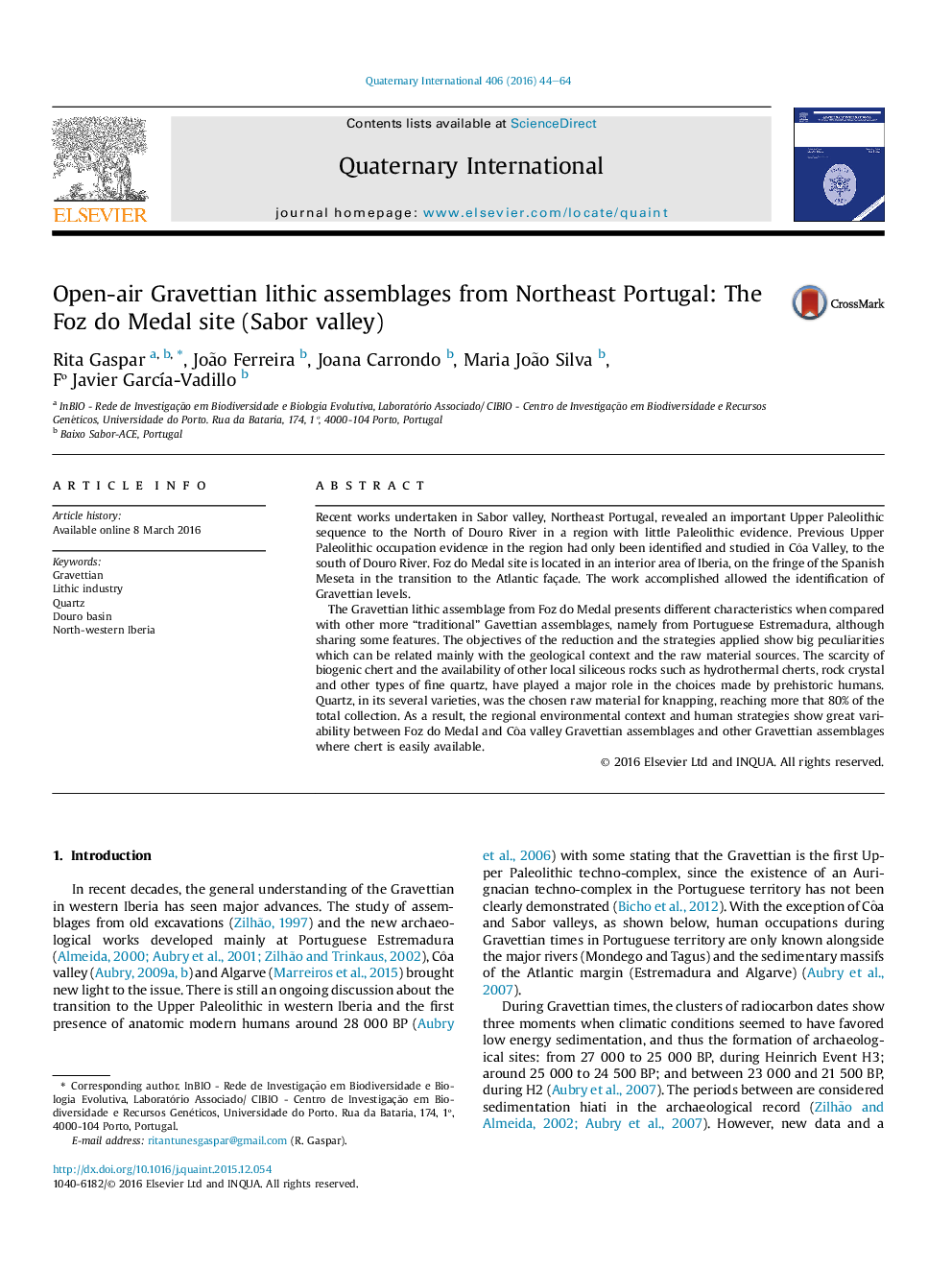| Article ID | Journal | Published Year | Pages | File Type |
|---|---|---|---|---|
| 1039966 | Quaternary International | 2016 | 21 Pages |
Recent works undertaken in Sabor valley, Northeast Portugal, revealed an important Upper Paleolithic sequence to the North of Douro River in a region with little Paleolithic evidence. Previous Upper Paleolithic occupation evidence in the region had only been identified and studied in Côa Valley, to the south of Douro River. Foz do Medal site is located in an interior area of Iberia, on the fringe of the Spanish Meseta in the transition to the Atlantic façade. The work accomplished allowed the identification of Gravettian levels.The Gravettian lithic assemblage from Foz do Medal presents different characteristics when compared with other more “traditional” Gavettian assemblages, namely from Portuguese Estremadura, although sharing some features. The objectives of the reduction and the strategies applied show big peculiarities which can be related mainly with the geological context and the raw material sources. The scarcity of biogenic chert and the availability of other local siliceous rocks such as hydrothermal cherts, rock crystal and other types of fine quartz, have played a major role in the choices made by prehistoric humans. Quartz, in its several varieties, was the chosen raw material for knapping, reaching more that 80% of the total collection. As a result, the regional environmental context and human strategies show great variability between Foz do Medal and Côa valley Gravettian assemblages and other Gravettian assemblages where chert is easily available.
